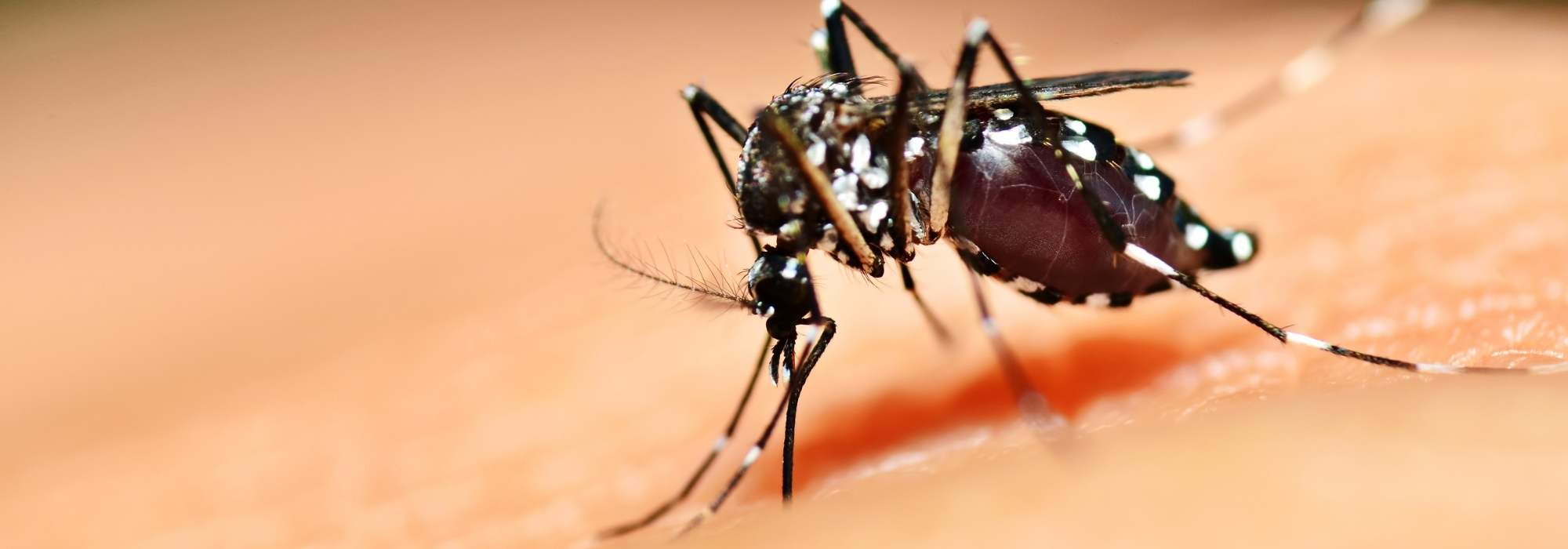
The Tiger mosquito in the garden: how to get rid of it?
Our natural solutions to combat this formidable mosquito
Contents
As summer approaches, an unwelcome guest invades our gardens: the tiger mosquito or striped mosquito (Aedes albopictus). This small insect, recognisable by its distinctive black and white stripes, has become an increasing concern for gardeners and nature lovers. Originally from the tropical forests of Southeast Asia, it has embarked on a global conquest, adapting with surprising ease to our temperate climate and finding ideal breeding grounds in our gardens.
Its painful bites and the persistent itching they cause have become a nuisance, disrupting our outdoor relaxation time. But beyond the discomfort it creates, the tiger mosquito poses a threat to our health and wellbeing, as it is a vector for viral diseases.
Let’s get to know this silent, invisible enemy better to implement the best strategies for eradicating it and preserving the serenity of our gardens.
Who really is this tiger mosquito?
Native to Southeast Asia, the tiger mosquito, scientifically known as Aedes albopictus, has colonised numerous regions of the world within just a few decades. Its arrival in mainland France dates back to 2004, first in the south, then increasingly further north, taking advantage of climate warming and urbanisation. Recognisable by its black body striped with white, this mosquito is now firmly established in nearly 70 French departments. It must be said that it ticks all the boxes for invading our gardens: opportunistic, ubiquitous, polyphagous, euryoecious (adaptable to all ecological conditions), exophilic, anthropophilic… in short, a true invader in every sense of the word.
An aggressive behaviour in this mosquito
Unlike our native mosquitoes, the tiger mosquito is diurnal. It bites mainly in the morning and late afternoon, making conventional protective measures more challenging. Its flight is silent, its behaviour discreet, and its aggressiveness formidable. Only the female bites, but she does so repeatedly and is particularly persistent. Indeed, the blood she draws when biting is essential for the development of her eggs.
Generally smaller than other native mosquitoes, the tiger mosquito measures an average of 5 mm. Suffice to say, it’s difficult to spot. Especially since it doesn’t produce the characteristic ZZZZZ sound of other species. If you have sharp eyes, you might still distinguish the five white stripes on its legs and a white line on its thorax and head. These white markings are actually due to the presence of scales.
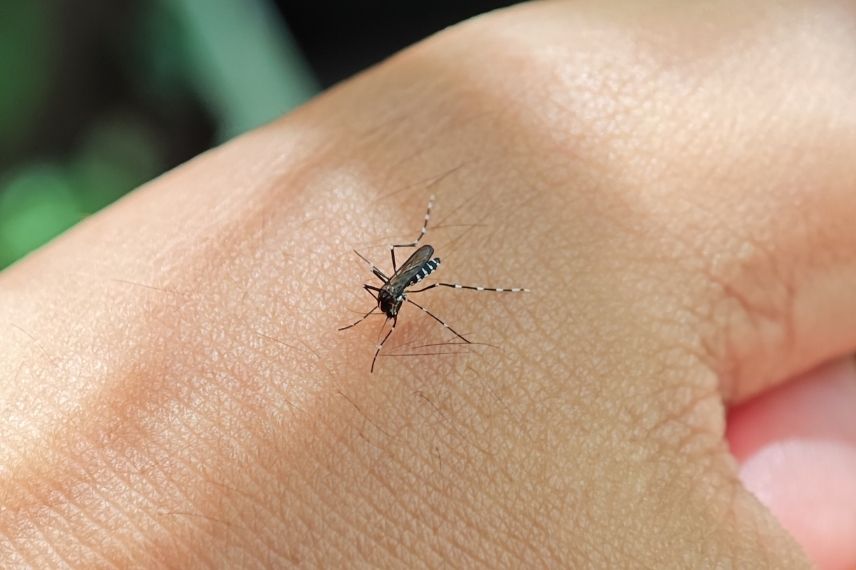
A life cycle adapted to our gardens
The tiger mosquito’s rapid and highly efficient life cycle largely explains its proliferation. A female can lay up to 200 eggs per cycle, depositing them in dried-out natural or artificial containers that may later hold water. These breeding sites are called larval habitats. The eggs, microscopic, black, and rather sticky, can withstand desiccation for several months and are resistant to both cold and heat, hatching as soon as conditions become favourable.
The tiger mosquito goes through four larval stages, which depend on water temperature, available food, and larval density. Then, the pupae, which no longer feed, develop in less than ten days, giving rise to a new generation of adults ready to restart the cycle.
This new generation takes flight immediately. But it rarely strays more than 150 metres from its birthplace. Mating occurs mid-flight, and very quickly, the female requires blood. Polyphagous, she targets humans as well as mammals, amphibians, reptiles, or birds.
What are the impacts of the tiger mosquito on our health and our garden?
From the garden to public health, the tiger mosquito is a disruptive presence. It is quickly considered a daily nuisance. But beyond these inconveniences, the tiger mosquito can prove far more dangerous.
Disruption of Outdoor Activities
The establishment of the tiger mosquito in our gardens goes far beyond mere discomfort. It profoundly alters the way we enjoy our outdoor spaces. In heavily affected regions, gardening, dining outside, or enjoying a summer evening becomes difficult. This sense of discomfort, often underestimated, leads many homeowners to neglect their gardens or even limit their time spent outdoors, directly impacting their quality of life.
Some people, more sensitive than others to mosquito bites (I belong to this category!), endure a real ordeal. A simple trip outside results in bites, swelling, redness, allergic reactions, and incessant itching.
Impact on Biodiversity
The occasional but increased use of insecticidal products to control tiger mosquitoes, including by local authorities, can have harmful effects on other beneficial insects, which are not the intended targets—particularly pollinators like bees and butterflies, already under strain.
Moreover, the tiger mosquito can also compete with other native mosquito species, disrupting local ecological balances.
A Vector for Diseases
But it is the health risk that most concerns authorities. The tiger mosquito is recognised as a vector for around twenty tropical viral diseases, including dengue, chikungunya, Zika, and even the Usutu virus.
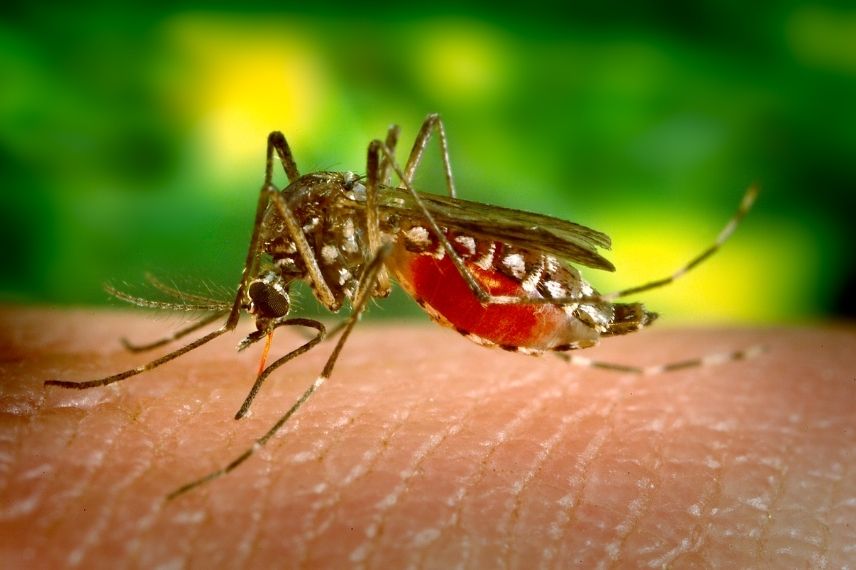
A female tiger mosquito engorged with blood
In France, cases of local transmission have already been observed several times during summer. The mosquito can bite a person carrying a virus—having travelled to a high-risk country—then transmit this virus to others within days. Although these episodes remain sporadic for now, the likelihood of local outbreaks increases as the climate warms. The tiger mosquito thus becomes a public health concern, closely monitored by health authorities.
However, its presence largely depends on the vigilance of individuals, as larval breeding sites are often found in private gardens.
How to eradicate the tiger mosquito?
Combating the tiger mosquito requires a multidimensional approach, combining preventive and curative methods, involving both individuals and communities. However, garden-level control is essential. Several fairly simple strategies can be implemented.
Rigorous elimination of stagnant water
The female tiger mosquito lays its eggs in minimal volumes of water, sometimes practically non-existent. And its eggs can remain there for weeks, even months, waiting for the right conditions to hatch. Therefore, preventive action is needed to remove stagnant water that could become breeding sites:
- Empty daily the saucers under flower pots, vases, watering cans, buckets, children’s toys, used tyres, and any other containers that can hold rainwater or irrigation water.
- Clean gutters, drains, and channels regularly to prevent water accumulation.
- Cover rainwater collectors tightly with fine mosquito nets or fitted lids.
- Turn over paddling pools, wheelbarrows, garden furniture, and other hollow objects that can hold water when not in use.
- Maintain your swimming pool carefully, even in winter.
- Fill tree hollows with sand.
- Ensure ornamental ponds are equipped with filtration systems or water jets to prevent stagnant water.
- In heavily infested areas, avoid planting Bromeliads, which naturally retain water in the hollows of their leaves.
In summary, you must empty, cover, turn over, or remove any container likely to hold water in the garden, on the terrace, or balcony.
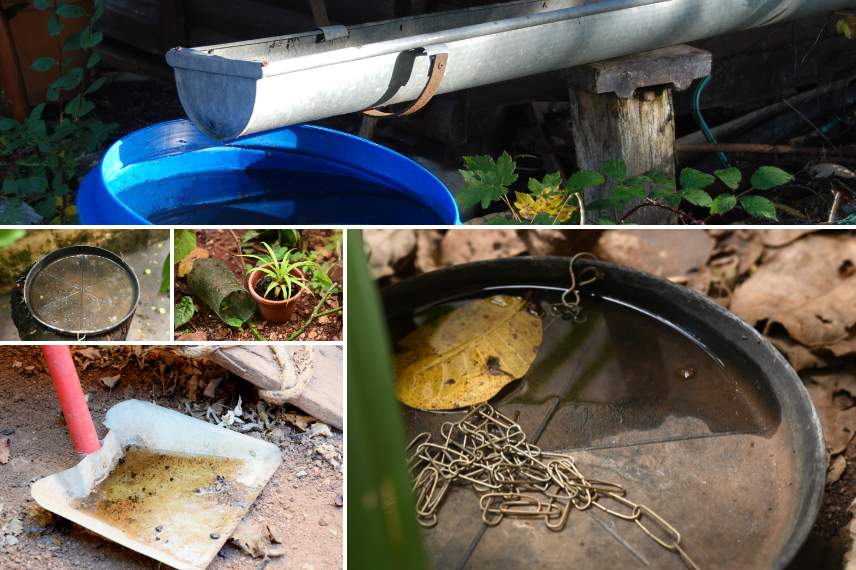
The systematic removal of stagnant water in the garden is the best way to combat the tiger mosquito
Environmentally friendly organic solutions
In terms of organic pest control, the introduction of natural predators is essential. This also applies to eradicating the tiger mosquito.
- Introduce larvivorous fish, such as ide, into ponds, pools, and lakes. These fish feed on mosquito larvae.
- Install bat boxes to attract these highly effective predators, or specific nests to attract swallows and swifts, insatiable mosquito eaters. I also invite you to read Ingrid’s article: How to make a bat shelter? and Olivier’s article Garden birds: swallows
- Encourage dragonflies in your garden. These insects are formidable predators of adult mosquitoes. Olivier explains everything in this article: Dragonflies and damselflies: what is their role in the garden?
Using organic insecticides
When stagnant water cannot be eliminated, for example in ponds, drains, or cisterns, an organic treatment based on Bacillus thuringiensis israelensis (Bti) can be considered. This natural larvicidal bacterium, harmless to other species and aquatic organisms, targets only mosquito larvae. Its use is occasional but very useful for permanent water bodies. It is essential to follow the manufacturers’ instructions carefully.
Planting repellent plants
You can create a repellent barrier with plants known for their mosquito-repelling properties. So, don’t hesitate to plant lemongrass (Cymbopogon citratus), lemon basil, lemon balm, lavender, rose-scented geranium, lemon thyme… The effects of these plants can be combined with those of essential oils from the same species, scattered around outdoor living areas.
However, these plants alone are not enough against the tiger mosquito. Their effect is short-lived and localised.
Innovative or simple solutions
Manufacturers are developing mosquito traps, targeted at females, which prove quite effective. But they are still very expensive.
On the other hand, the use of outdoor fans is surprisingly effective. The tiger mosquito, not very robust and lightweight, with limited flying abilities, struggles against a constant airflow. This simple device, often used in tropical areas, becomes an interesting supplementary solution in the most affected regions.
Similarly, installing mosquito nets, fine shade cloths, or protected pergolas can create comfortable zones in the garden.
- Subscribe!
- Contents
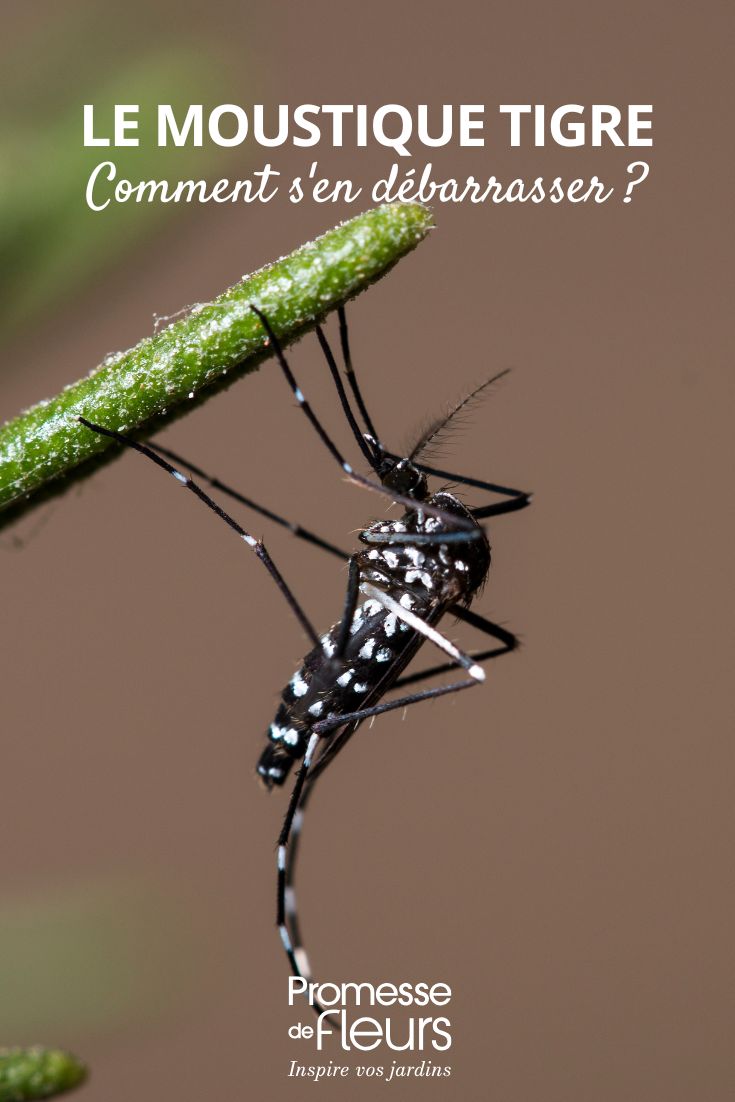































Comments